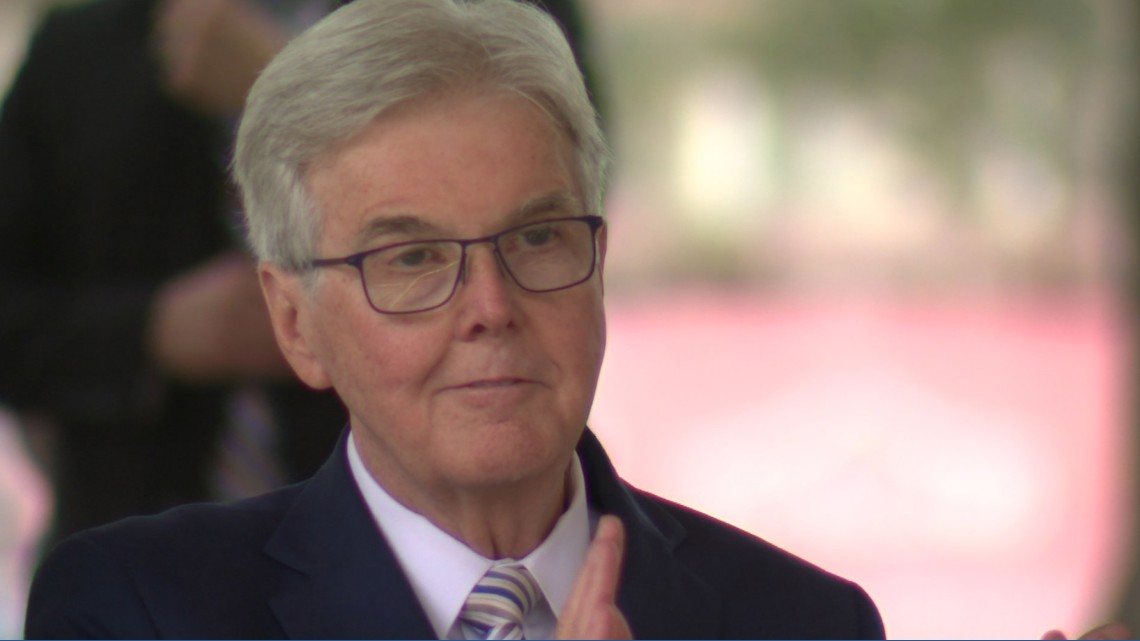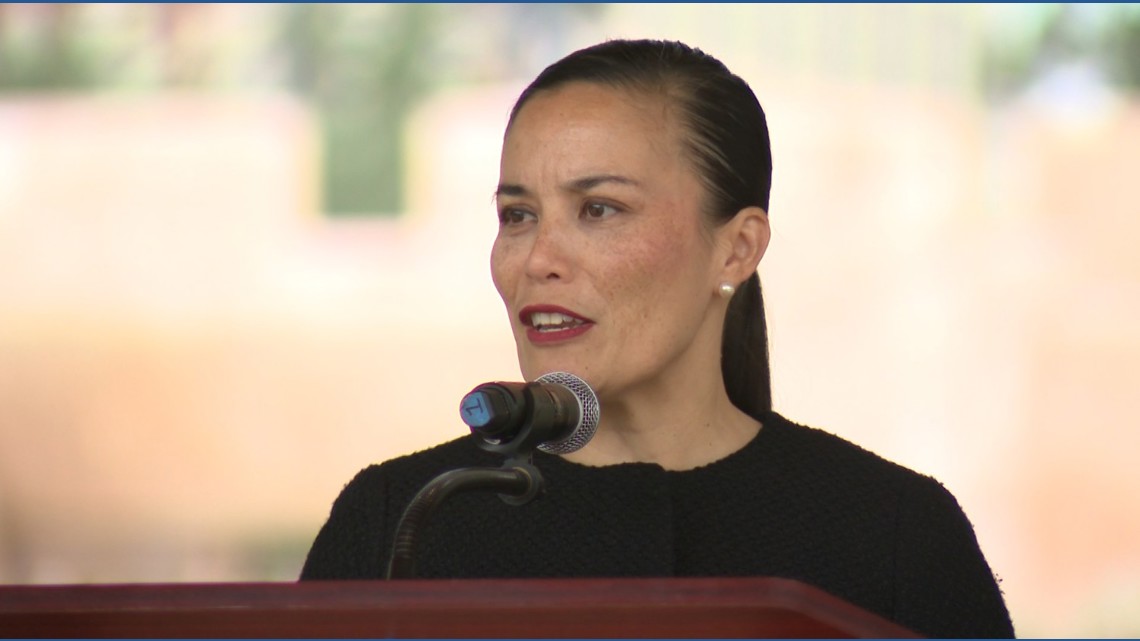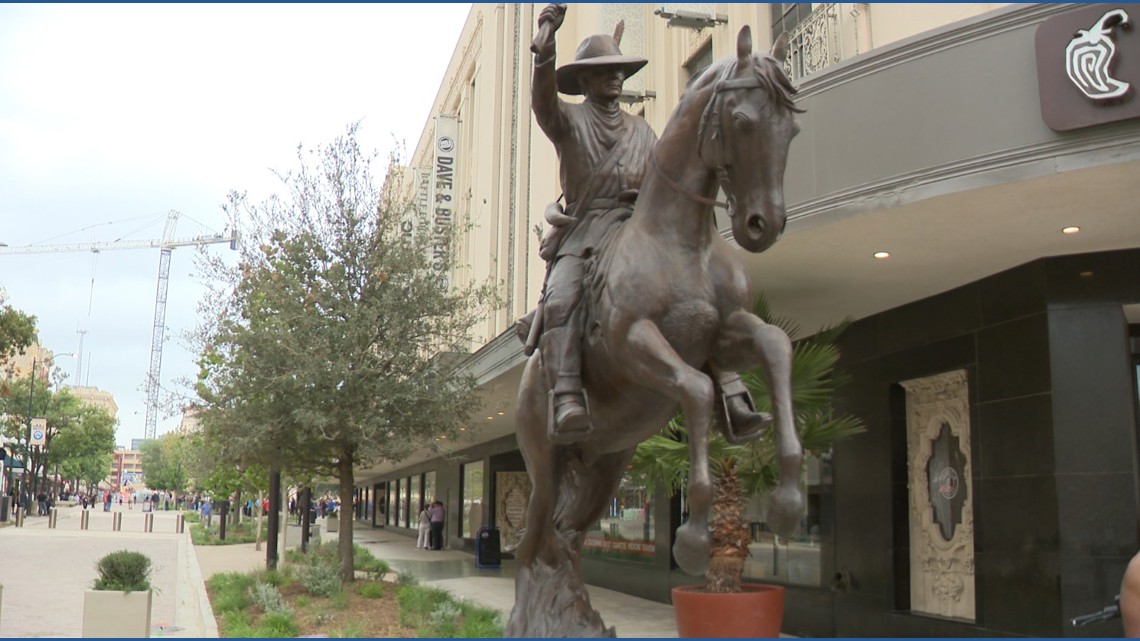The promenade dedication marked another step in the ongoing implementation of the $550 million plan to reimagine the Alamo grounds.
SAN ANTONIO — Marking what officials called the “half(way) point” of implementation of the ongoing Alamo Plan to reimagine the grounds of the iconic San Antonio landmark, Mayor Gina Ortiz Jones and Texas Lt. Gov. Dan Patrick helped celebrate the completion of the promenade—a spruced-up walkway stretching from East Commerce to the chapel, adorned with statues of Sam Houston, Jose Antonio Navarro and other key Texas Revolution figures.
The Alamo Promenade represents just one element of the ongoing Alamo Plan, discussions over which began a decade ago. At that time, cars could still roll right by the Alamo church building itself; now it’s blocked off by bollards and a security gate, emphasizing the promenade and revitalized plaza areas as a space that’s now more amenable to pedestrians and – officials hope upon completion of the development in 2027 – growing crowds of visitors.
“We have, today about a million and half people coming (a year),” Patrick said at the Friday event. “I think in year number one it’ll be 3 million or 4 million.”
Patrick and Jones sit on opposite sides of the political spectrum but stood side by side while cutting the ribbon to celebrate the promenade’s debut.
And if there was any tension over the recent ousting of former Alamo Trust CEO Kate Rogers – who has accused Patrick in a new lawsuit of violating her First Amendment rights when she says he zeroed in on her personal academic reflections before calling for her resignation just a month ago – it wasn’t publicly apparent as Jones and Patrick addressed the crowd on Friday.




Patrick spoke broadly while hyping up the vision for the Alamo grounds master plan, including the ongoing development of a massive new visitor and museum that represents the most substantial new additoin to the grounds. He touted the Alamo Plan as one that would make it “the greatest tourist attraction of a historical site in America,” one that would delve into the Native American perspective and feature technology that “you would’ve thought Disney World would’ve created.”
Jones, citing her experience as a military veteran and student of global wars at the U.S. Army School of Advanced Military Studies in Kansas, was more pointed in her remarks. She praised former leaders who drafted the Alamo Plan’s foundational vision a decade ago for understanding that the landmark is “important not only for our history, but certainly for our economy and our identity.”
Of the many parts making up the vision for the Alamo, she made a point of highlighting one tenet encompassing an objective to “include and interpret the diverse cultures that contributed to the story of the Alamo area through meaningful and memorable experiences for visitors.”


Newly installed Alamo Trust CEO Hope Andrade said the $550 million Alamo Plan is set to be completed “on time and on budget” in 2027. She said the Alamo revitalization efforts were a result of visitors saying that the “experience has not yet reflected the standards of a world-class historic site.”
“Step by step, building by building, we are preserving, we are restoring and we are enhancing these hallowed grounds of the Alamo,” Andrade said.
City Council approved the Alamo master plan in May 2017.
Work to repurpose the historic Crockett and Woolworth buildings into what will be the new Alamo museum began in October 2024; the Alamo Trust has said the facility “will deepen public understanding” of the landmark through galleries, a 4-D theater and focused curatorial efforts.
PHOTOS: Renderings for the upcoming Alamo Museum and Visitor Center
At one point, there were plans to move the Cenotaph as part of the Alamo grounds facelift. But those bids failed when the Texas Historical Commission overwhelmingly voted to keep it in place, despite the city’s desire to relocate it.
